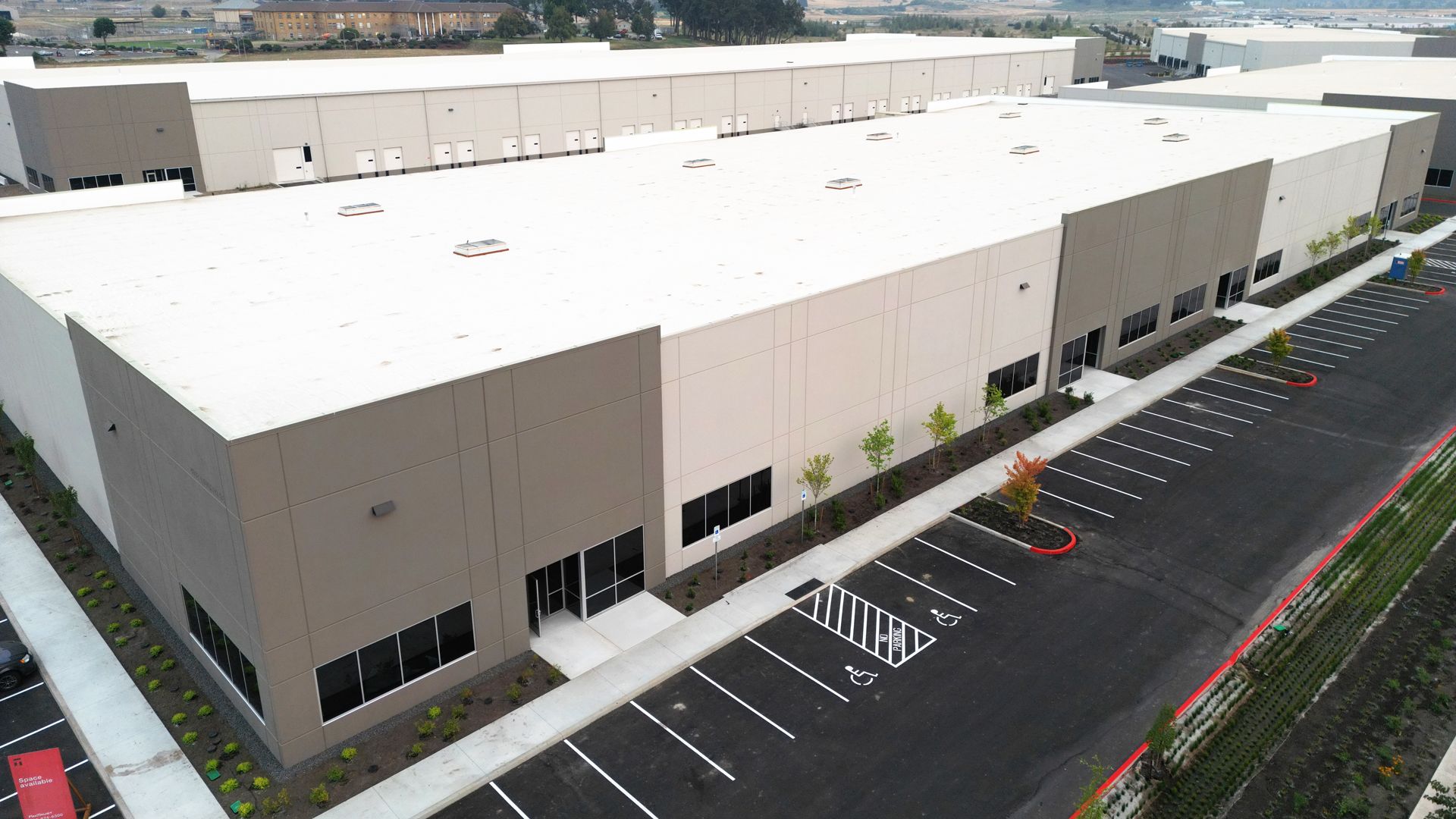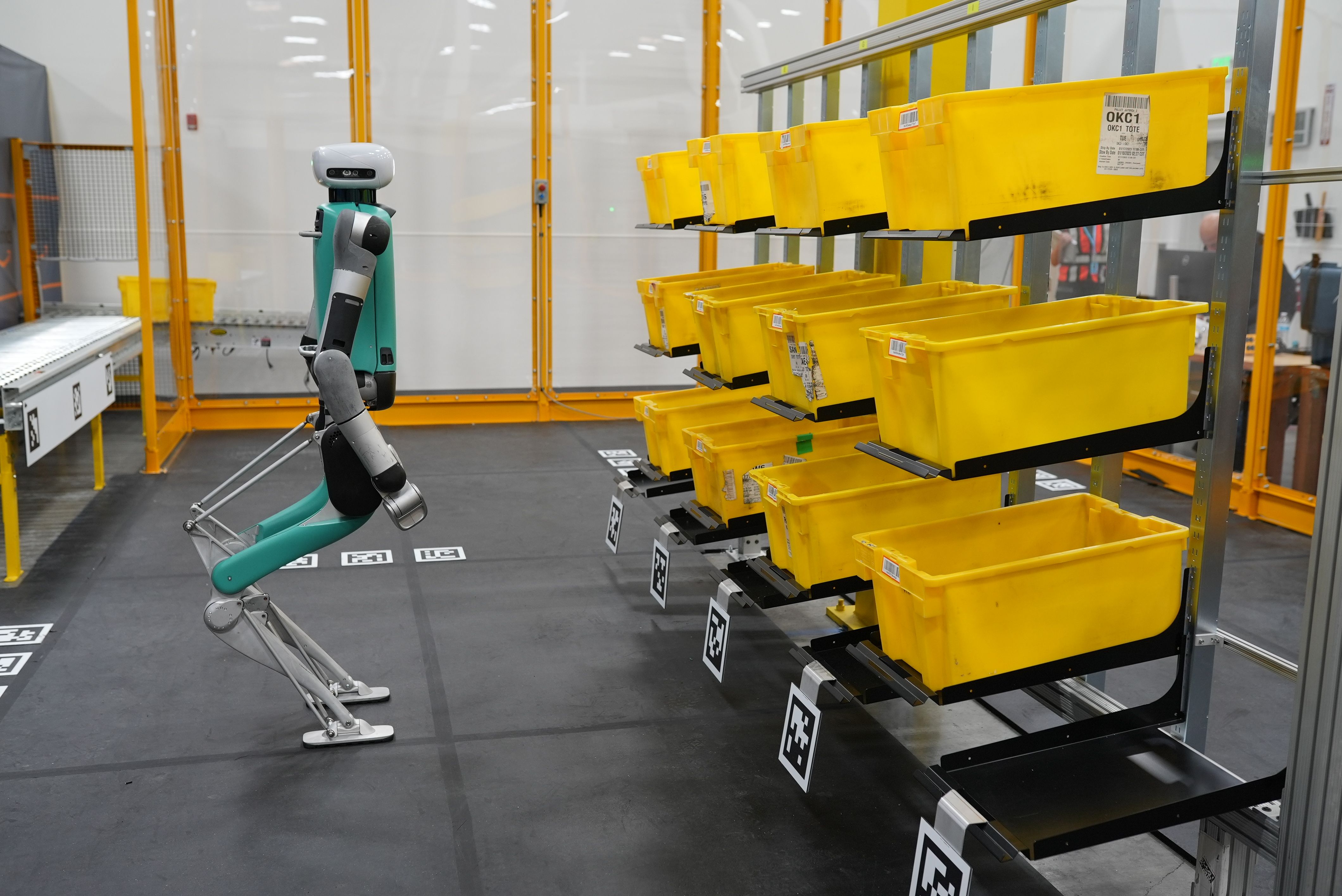
A factory planning to pump out 10,000 two-legged robots a year is taking shape in Salem, Oregon — the better to help Amazon and other giant companies with dangerous hauling, lifting and moving.
Why it matters: Agility Robotics says that its RoboFab manufacturing facility will be the first to mass-produce humanoid robots, which could be nimbler and more versatile than their existing industrial counterparts.
- China seems to think so: Beijing recently announced a goal of mass-producing humanoid robots by 2025.
Driving the news: Agility Robotics, which makes a bot named Digit that’s being tested by Amazon, plans to open RoboFab early next year, inaugurating what CEO Damion Shelton calls “the world’s first purpose-built humanoid robot factory.”
- “We’ve placed a very high priority on just getting robots out there as fast as possible,” Shelton, who’s also a co-founder, tells Axios.
- “Our big plan is that we want to get to general-purpose humanoids as soon as we can.”
- There’s a growing backlog of orders for Digit, which the company says is the first commercially available human-shaped robot designed for warehouse work.
Where it stands: Agility has produced about 100 robots since its founding in 2016, and plans to move Digit production from its Tangent, Oregon headquarters to the more spacious 70,000-square-foot RoboFab facility in the coming months.
- At first, production will be in the hundreds, but eventually RoboFab is “going to have a significantly larger capacity of 10,000 robots per year, peak,” Shelton says.
- Companies that buy into Agility’s Partner Program — which gives them input into Digit’s capabilities, based on their own logistics needs — will get their robots delivered in 2024, ahead of broader delivery in 2025.

Zoom out: Building bipedal robots that can walk without falling over is an engineering challenge that has stymied many a robotics champion.
- Giving them dexterous hands and arms — and programming them so they can work safely alongside humans — are other big stumbling blocks.
- Competitors in this space include Tesla with its Optimus, Boston Dynamics with Atlas, Sanctuary AI with Phoenix, Figure with its eponymous robot, and Apptronik with Apollo.
- (Here’s a list of humanoid robot makers, not all of which are attempting bipedal machines.)

The intrigue: Amazon, which deploys a multitude of purpose-driven robots, recently announced that it’s testing Digit at a laboratory south of Seattle, shown in the photo above.
- “Our initial use for this technology will be to help employees with tote recycling, a highly repetitive process of picking up and moving empty totes once inventory has been completely picked out of them,” per Amazon’s announcement. (Totes are the yellow bins shown in the picture.)
- Amazon says that Digit “can move, grasp, and handle items in spaces and corners of warehouses in novel ways” and that its “size and shape are well suited for buildings that are designed for humans.”
- Amazon has invested in Agility through its Industrial Innovation Fund. The companies won’t say how much, but it’s been reported that Amazon was “part of a $150 million funding round that Agility Robotics completed in 2022.”
Fun fact: Digit, who is 5’9″ and 140 pounds, can walk over and plug itself in when it needs to recharge.
What they’re saying: “We’re excited about Agility — we’ve been working closely with them since about April of last year,” Amazon’s chief roboticist, Tye Brady, tells Axios.
- “I’m curious about the bipedal nature. I’m curious about mobility in general,” he said, adding that it’s “very early days” for robots of this type.
- By testing them in a lab, Amazon hopes to figure out how they might move in an actual fulfillment center surrounded by people.
- “With an uneven surface, a bipedal robot can handle that better than a wheeled robot,” Brady said, also praising the two-legged robot’s “ability to turn in tight corners.”
Between the lines: Sensitive to the concern that robots will take jobs from humans, Amazon teamed up with MIT in October for a project that aims to study automation’s impact on work.
- Amazon says the 750,000 mobile robots it has deployed in the last decade have helped create 700 new categories of jobs for humans.
- “Robots are good at taking on repetitive and predictable tasks, and by doing so, they can free up employees to take on more complex responsibilities that help us better deliver for customers,” Brady said in an interview on Amazon’s website.
The bottom line: There’s great momentum behind robots, and humanoid versions specifically — which are appealing in an anthropomorphic way — but also lots more on-the-job testing to be done.



